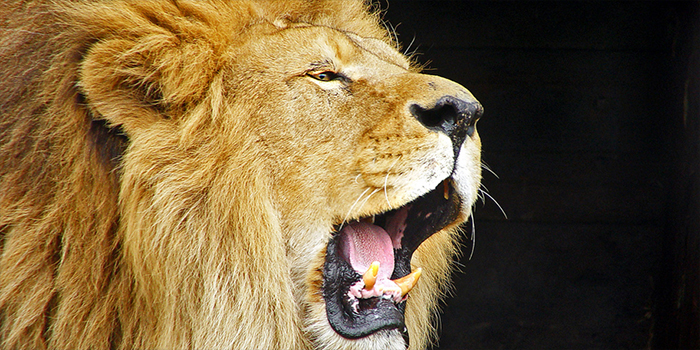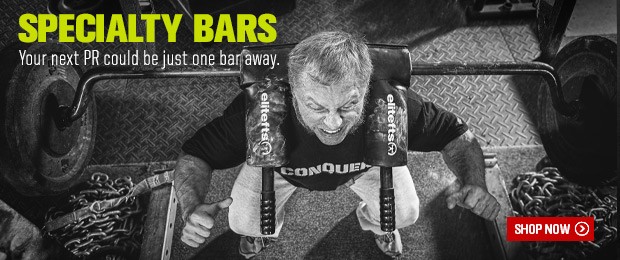
Vince Gironda was the world’s first bodybuilding coach, the first personal trainer, and was a pioneer in the fitness industry who is largely forgotten today.
Born in 1917, his full name was Vincent Anselmo Gironda. Born in the Bronx of New York City, his family moved when he was a toddler to California, where his father worked as a stuntman. His father was a stuntman on the original production of Ben-Hur in 1925. Vince grew up wanting to be a dancer and trained for a professional dance career throughout adolescence and into his teens. He had bit dancing roles in a few films, but his father was critical of his dancing aspirations, and rather than be a “sissy” as his father called him, Vince decided to try being a stuntman like his father.
Vince took up stunt work at the age of 22, but he quickly realized he lacked the muscle for it. He joined a local YMCA, then after eight months, he went to the Easton brothers' gym to train.
RECENT: Experiments with 5x5 Training
Sidenote: Speaking from personal experience of working in Hollywood, stuntmen are largely under-appreciated for their athletic abilities. Most stuntmen are the “ripped” physique body doubles for actors, while at the same time they perform extremely coordinated and often dangerous stunt work that requires a unique blend of fight choreography, raw athleticism, and high-level technical expertise. They perform everything from evasive driving, rock climbing, explosives and demolitions, parkour, wire work, and many other skills. This is a shout-out to any stuntman or stuntwoman who may read this.
The Easton brothers' gym still exists today, and in its day it was one the original “bodybuilding meccas” before Muscle Beach and Gold’s Gym in Venice took that title. It was founded in 1938 by Harvey and Dale Easton, and was a bodybuilder’s gym before "being a bodybuilder" was even in the social lexicon. Vince credits his time at Easton gyms for influencing many of training methods and guiding his future philosophies. He trained at Eastons for almost ten years before opening his own gym in 1948.
The Bodybuilder
Vince was alive and well during the classic age of bodybuilding in the 1950s, and he competed five times from 1948 to 1962. His physique back then was a total outlier; he was always the most ripped and proportionate bodybuilder on stage, had the smallest and widest V-taper (relatively speaking) and he was a master poser, well known for his routines set to music and his precise muscle control. While he never won a competition, he was awarded a “Best Definition” award more than once. He was actually criticized for being too defined — something that sounds absurd today. At the time, being extremely “ripped” was very uncommon, and no one dieted that intensely or necessarily knew how to in the first place.
Vince became far more known for his training methods than his physique, and by the start of the 1960s, his gym was considered a mandatory visit for bodybuilders in the Los Angeles area. Vince was the trainer of Larry Scott, the first Mr. Olympia, and he was in fact the first trainer that Arnold Schwarzenegger ever worked with when he arrived in the USA in 1960. He worked on and off with many legendary bodybuilders over the decades. The last star pupil of his was Mohamed Makkawy of Egypt, who became one of the top bodybuilders of the 1980s, placing in the top 10 more than once, and being one of the last men to beat Lee Haney in competition before he became Mr. Olympia.
The Personal Trainer
Vince eventually billed himself as a “Trainer of the Stars.” His gym was located in North Hollywood, and was only minutes away from Burbank, the “Media Capital of the World.” Warner Bros. Studios, Disney, NBC, and Columbia all had studio lots and sound stages in the immediate area. His gym did a brisk business with the film studios, as he became their go-to trainer for getting actors into shape FAST. During the peak of his career in the 1970s and 1980s, he had a constant influx of actors, and his gym was covered with pictures of the stars that he had trained.
Vince was an applied scientist, and he was self-educated in the areas of nutrition and training. Decades before “broscience” or the trend of “science and evidence” ever came into existence, Vince was ahead of both curves. Vince realized early on that much of what bodybuilders preached and practiced was purely observational, and based solely upon personal experience. At the same time, he recognized that self-experimentation was the fundamental practice for learning about one’s health. Vince also recognized that internal health was the deciding factor of how the stimulus of training was handled.
As he was a trainer first and foremost, he always used clients to test out his theories and methods. The following is not a comprehensive list, but it gives you an idea of how innovative Vince was, decades before the current fitness industry coalesced.
Innovations
- The importance of digestion for muscle growth and overall health.
- Metabolic typing: there was no “optimal” diet and everyone had varying needs and preferences.
- The importance of liver health for bodybuilders.
- "Metabolic" Training/Circuit Training/Peripheral Heart Rate Training
- Rapid weight loss through low and zero-carb dieting and high frequency training.
- 15x4 “cluster training” for size, strength, and a conditioning effect.
- The recognition that different rep ranges had different effects on hypertrophy.
- Cycling rep ranges (undulating periodization) to maximize hypertrophy.
- 8x8 training for hypertrophy.
- 10x10 training, originally conceived as a way to train while CUTTING, due to the lighter weights used and the high metabolic cost (and relatively short training time).
- Strength being joint-angle specific.
- Organizing exercises based on which section of a muscle they emphasized, and realizing that hypertrophy emphasis was also joint-angle specific.
- Hypertrophy being the result of sustained intramuscular tension, peak contraction, and “metabolic” stress, and not only dependent upon the load used.
- Recognizing that individual structure (anthropometrics) guided how an exercise should be performed for maximal stimulus.
- Advocating that bodybuilding followed mathematical principles of structure and aesthetics, and that physiques could be developed according to these principles.
- Recognizing that there was a dose-response relationship and adaptation curve between training volume, intensity, and frequency.
Does any of the above sound familiar? The concepts are still studied and discussed in modern times, yet Vince was practicing and experimenting with all of the above over 50 years ago, before there were ever any “studies” to support most of it. The man was ahead of his time, and up until the early 1980s, his writing was prolific.
Despite being a prolific writer, Vince was not much of an organizer, and even less of a promoter. He was also, by many accounts, extremely abrasive and difficult to get along with. His gym mirrored his personality. It was dark, had no music, and all the equipment was custom-made. He also was fond of throwing anyone out who disrupted his sense of ambiance.
The Disappearance of Vince from the Bodybuilding Scene
Why does hardly anyone know who Vince Gironda is today? A few reasons.
- Vince published only one book his whole career, "Unleashing the Wild Physique", which came out in 1984. Original copies today are very rare, and cost hundreds of dollars.
- Vince was always controversial, didn’t like squats or bench press, and all of his content was published before the internet or computers were widely used.
- While many people read Vince’s work, the only way to save it was to hold on to magazines and courses. Unless you were training in the 1980s, it’s unlikely you’ve ever been exposed to any of his content.
- Vince hated steroid use, and was vocally against it. He also hated the trend towards “mass monsters” that started in the 1980s, and considered the look to be hideous. This obviously didn’t endear him to the bodybuilding community.
All this said, Vince Gironda has had a major influence on me as a trainer and as a lifter. I’ve studied and experimented with his methods my entire training career, and much of it is absolutely effective and ironically in line with modern “science and evidence” recommendations. I hope this article gives a sensibility of appreciation for the “Iron Guru,” and for the history of the Iron Game at large.
There is nothing “new” that anyone does. We are often just rediscovering what has been lost, or finding evidence for what’s been proven in gyms 10,000 times. Respect what came before you.











I trained with Vince Gironda in the 1985 and again in 1992 a few years before his death..
I was allowed by Vince to Video tape him for the favors I did for him..I am the only one in the WORLD who has Vince demonstrating exercises from his famous book..